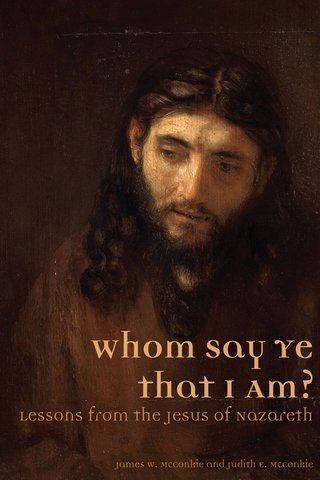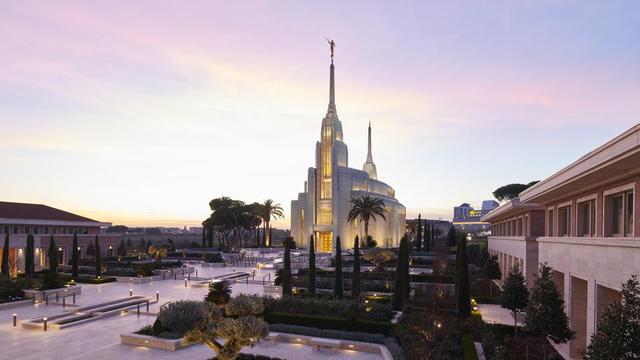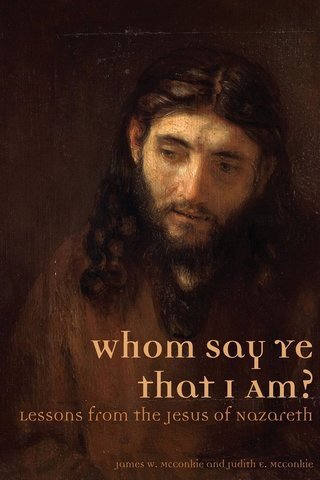Making a pilgrimage is to undertake a journey to a sacred place as an act of religious devotion. Anciently, pagan pilgrims sought to consult the oracles and offer sacrifices at places now familiar to us as impressive ruins. Millions of Buddhists, Muslims, and Hindus annually seek enlightenment through the very act of making a journey to sacred sites around the world—not as tourists but rather as pilgrims. The four Gospels tell us that Herod’s temple in Jerusalem was the destination for pilgrims who attended three annual pilgrimage festivals. The journeys were required for all adult Jewish men until the destruction of the temple in 70 A.D. The Gospels record that Jesus, His family, and His disciples made their way to Jerusalem in obedience to tradition and to express their religious devotion. The most familiar pilgrimage was, of course, the Passover Feast, a celebration meant to commemorate the release from bondage of the Children of Israel in Egypt.
For two millennia Christians have made similar pilgrimages as affirmative acts of faith in a Christ-centered life. Whether made on foot, on the back of a donkey or, in our case, stuffed into the seats of a modern jetliner, pilgrimages have always been an important part of the world’s faith traditions.
So for us and nearly 400 other members of The Church of Jesus Christ of Latter-day Saints, the opportunity to make a pilgrimage came when the dates for the open house for the newest temple in the diaspora of 161 dedicated temples was announced. We were asked to join 16 other tour leaders and educators who would shepherd these patient, faithful Saints on a pilgrimage to Rome.
We all felt keen responsibility to research and share ideas and images related to the experience— information on early Christianity, the art and architecture of the Roman Empire, and the Renaissance in Italy. We came to understand the weight of tradition on a temple at this very special site. It was, after all, to be located in the heart of Christian faith, in a country where millions of pilgrims had come for 2,000 years to find spiritual solace and salvation.
Yet this site was to also become a place to establish the most important covenant relationships men and women can have in this life and the life to come.
As we studied, we read with new eyes each of the familiar accounts of Jesus’s participating in significant spiritual journeys of commitment and covenant renewal.
The Meaning Behind One Symbol in the Rome Italy Temple
The Rome Temple employs the symbols and iconography of Rome’s early Christian and Renaissance past in order to express its purpose and significance.
It is tricky to design a building in the heart of Rome, a city known for literally thousands of years of artistic endeavor acknowledged the world over. The building had to reflect knowledge of those traditions and aesthetics of the place without simply copying those famous existing structures. It should not only employ symbols that would speak to those who knew something of those traditions and tastes but also specifically to members of the Church.
Neils Valentiner and his associates at VCBR took on the challenge. They came to consensus on a basic shape for the building known as the vesica pices (literally “the bladder of a fish”). The shape is repeated over and over throughout the building and the entire site. It is a shape that reflects early Christian imagery in addition to the ancient Greco-Roman tradition of and love for geometric order and beauty. A bit of background information helps here.
In the first century after the death and resurrection of Jesus, one way to covertly identify fellow Christian converts was to draw an icon in the dirt known in Latin as the vesica pices. By drawing two overlapping circles, the shape created at the center became an image that took on the simple outline of a fish. The drawing was thus a token of affiliation.

But the meaning of the image was multi-layered. For example, in the Greco-Roman world, the Greek word for fish or pices is ichthus; many of the early Christians spoke Greek so the icon of a fish was also a visual reference to an acronym for the Greek title “Jesus Christ, Son of God, Savior” (Iesous Christos, Theou Uios, Soter). So both the image and the Greek and Latin words for fish referenced Christ’s admonition to Peter to be a “fisher of men” (Matt. 4:18-22) as well as other fishing metaphors in the gospels.
Euclid of Alexandria, a mathematician of the 3rd century B.C., developed a geometric proof for the so-called shape of the fish. Known as Euclid’s Proposition 47, the proof became the instructions for creating any number of other forms derived from the oval with “pointed ends” and used over and over and over by Renaissance artists and architects. One shape, a rectangle with very specific ratios of short sides to long sides, was derived from Euclid’s famous proof. Known as the “golden rectangle,” it was what the ancient Greeks considered to have literally “divine proportions.”
With that background in our consciousness, we made our way to the Rome temple site. Suddenly, the shape of the building itself had new significance beyond the simplicity of its lines. In addition, the design motifs of carpets and chandeliers, of walkways in the garden, reflect the shape—the vesica pices. For knowing pilgrims all over the world and especially for Italian Saints, the shapes—the sacred geometry, the divine proportions—of the place suggest layer upon layer of messages about commitment to “Jesus Christ, Son of God, Savior.” This sacred space is the destination for pilgrims who come to the true center of Christian faith, a place where God dwells and where we covenant to a divine relationship with Him and His exquisite Son.
Lead image from Newsroom
James and Judith McConkie are the authors of Whom Say Ye That I Am: Lessons from the Jesus of Nazareth, published by Kofford Books. It is available in print, Kindle and Audible formats at Deseret Book stores and online and through barnesandnoble.com and amazon.com. This is the ninth in a series of essays related to their work. Watch for more on ldsliving.com.




